
Should I launch my product on Shopify or Amazon?
Product launch dilemma: Shopify or Amazon? We break down the pros and cons of each, helping you choose the best platform for quick sales vs. long-term brand building.

While Google currently has the vast majority of the search market, the fallout from the proposed News Media Bargaining Code could be about to change the search landscape.
Google threatened to pull its search products, and Microsoft offered to take its place.
“We had a very informative discussion about Microsoft’s interest in the Australian market. At the moment they have a small market share in search, but they’re interested in expanding that, they’re interested in developing the presence of Bing here.”
– Australian Minister for Communications, Paul Fletcher.
It’s very unlikely that Google will leave, but many forward-thinking marketers are looking at how they can increase their online presence on the Bing network.
The Microsoft search engine gets a lot more traffic than you might think.
Bing and its partner search engines power around 5% of all searches conducted in Australia.
And in a 2020 survey, 18% of Australians stated that they had used Bing in the last four weeks.
Bing also powers Yahoo! and AOL.
Even if Google doesn’t leave, you should be paying attention to the opportunity that Bing presents.
Here’s what you need to know about advertising on the Microsoft search engine.
Bing Ads, now known as Microsoft Advertising, are the paid search ads displayed on Bing and its partner search engines.
Microsoft Advertising uses a pay-per-click model similar to Google Ads.
You can create a paid search campaign targetting keywords related to your products and services.
When a user conducts a search containing your targeted keyword phrases, you bid against competing advertisers to appear in the paid placements of the search engine results page (SERP).
When a user clicks on your ad, you pay a fee.
Bing Ads allow you to target people at the precise moment they are actively searching for your products and services.
Just like Google Ads, you can be there at the top of the SERP when people are looking for the best solution to a problem or considering a purchase.
You can reach highly targeted audiences at the perfect moment to capture a lead or generate a sale.
If you look at Microsoft’s search ad revenue, you can see an increase every year, even with the disruption of the COVID-19 pandemic.
Microsoft Corporation Search Ad Revenue 2016-2020
Advertisers are willing to spend more and more on the ad network because it gets results.
And with most businesses slugging it out on Google, the competition and advertising costs on Bing are much lower.
By capitalising on Bing Ads now, you can get more customers and leads at a lower cost, and before more Australian businesses switch their budgets to Bing.
Bing Ads and Google Ads are very similar.
They both use keyword bidding and have an algorithm that evaluates search intent to display ads that best meet the searchers’ needs.
But there are also some key differences.
Cost-Per-Click
Generally, Bing Ads have a lower cost-per-click than Google Ads.
Search Engine People found that clicks for the insurance industry were 59.2% cheaper on Bing.
And WordStream found that clicks on Bing Ads across all industries were 33.5% cheaper on average.
The real cost of your ad depends on your keywords strategy and the number of conversions the traffic generates, but there’s no denying that Bing Ads are cheaper for the average business.
More Control
Bing Ads and Google Ads provide innovative ways for you to increase your ad targeting, but Bing has some features that you can’t get with any other paid search network.
You can use age filters so that your ads are only displayed to searchers in a specific age group and location filters so that only searchers in a particular town, city, or county see your ads.
Bing provides some great targeting tools to root out wasted clicks and bring your advertising costs down.
Less Competition
Google is still by far the most used search engine in Australia.
Most searchers use Google, and most advertisers use Google Ads.
But that also means there is less competition on Bing.
When you bid on keywords, you’re competing against fewer advertisers, which helps you achieve better ad placement and cheaper advertising costs.
Most of the fundamentals of paid search translate directly from Google Ads to Bing Ads.
The platforms are similar, but that doesn’t mean you should set up your campaign like for like.
What works for you on Google Ads might not be nearly as effective on Bing.
It’s important to get to grips with the different campaign types available to Bing advertisers before you launch a campaign.
Microsoft Expanded Text Ads
Much like Google Ads, the most common campaign type on Bing is expanded text ads.
The ad consists of a headline, a URL, and the ad copy.

You can include up to 90 words in the ad copy, and the ad is automatically optimised for mobile and desktop users.
Microsoft Responsive Search Ads
Responsive search ads use AI to make the process of optimisation much easier.
You can submit up to 15 headline variations and four different versions of your ad copy.
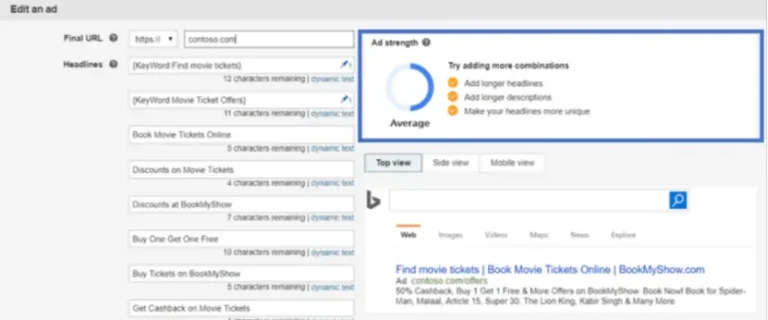
Microsoft’s AI will then experiment with different combinations and settle on the best performing version of your ad.
Microsoft Dynamic Search Ads
Dynamic search ads are automatically created to help you capitalise on search queries related to your products and services.
Microsoft Advertising determines the intent behind a relevant search query and automatically generates an ad that points to the appropriate landing page on your website.
The dynamic ad appears in the search results like an expanded text ad.

You can run a dynamic search ads campaign alongside your other campaigns to increase your advertising coverage and identify opportunities to expand your keyword lists.
Microsoft Product Ads
Product Ads are designed to help e-commerce businesses showcase their products to searchers showing buyer intent.
They include an image, pricing, delivery, and seller information.
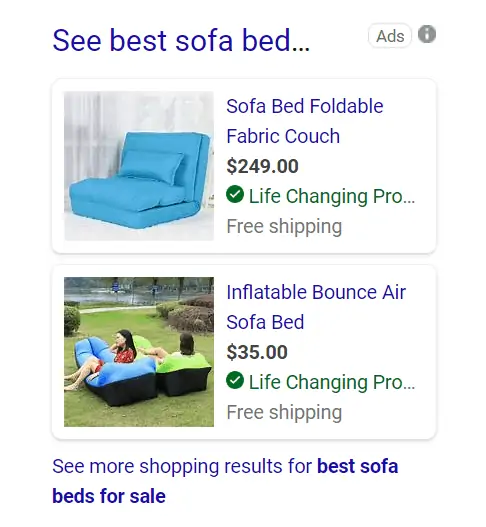
Like Google shopping ads, this ad format is a great way to get your products in front of an audience that has shown buyer intent and is close to making a purchase.
Microsoft Audience Ads
Microsoft Audience Ads are the Bing equivalent of the Google Display Network.
You can use this ad type to attract non-search traffic from users that click on ads strategically placed on third-party websites.
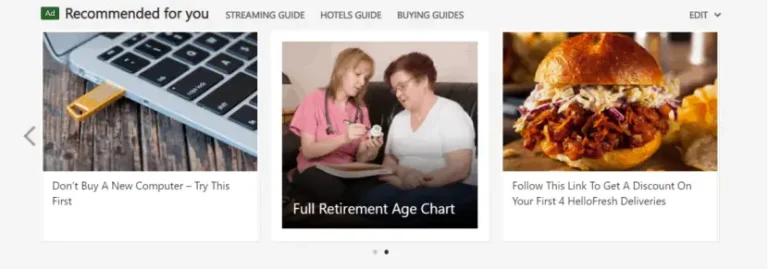
Display ads are often embedded beneath organic content on third-party websites that are contextually relevant to the product or content you are advertising.
Microsoft has made the process of setting up a Bing Ads account really straightforward for advertisers that already run Google Ads campaigns.
They know that most advertisers will also be running ads on Google and have made it possible to import your existing ad campaigns into the Microsoft Advertising platform.
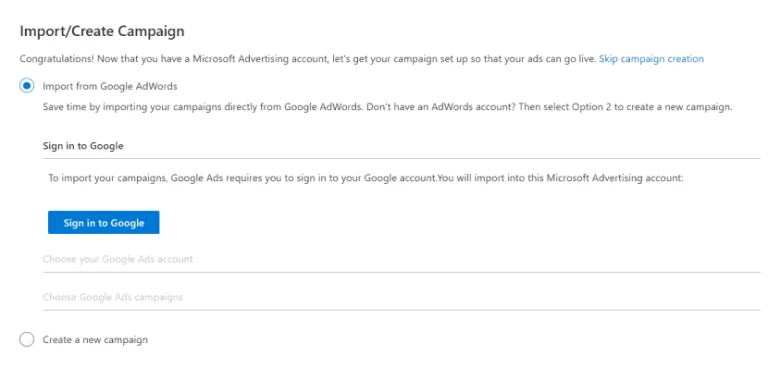
Importing your campaigns is one of the first steps of the account creation process.
However, you can’t import everything from Google Ads.
You will need to manually set up a few things from within the Microsoft Advertising dashboard, including:
For example, if you have Google Ads site link extensions, you’ll need to set these up within the Microsoft Advertising dashboard for your Bing Ads.
After importing your Google Ads campaigns, it’s important to adjust your bidding settings and campaign budgets before going live.
If you have a high budget Google Ads campaign, you should reduce the budget and see how it performs on the Bing network.
Bing is generally less competitive than Google, and advertising costs are lower for most industries.
Experiment with lower budgets and see how it compares to your Google Ads performance.
You may find that you can generate more leads for less ad spend on the Bing platform.
Bing users are different to Google users. They have a different demographic breakdown, and they use different keywords to conduct searches.
While you may find that your Google Ads campaigns seamlessly transition to Bing, you may also find new keyword opportunities to capitalise on.
According to Microsoft Advertising data, 27% of clicks on Bing ads are from search queries unique to the search engine.
The Bing Keyword Planner is the equivalent of Google Keyword Planner.
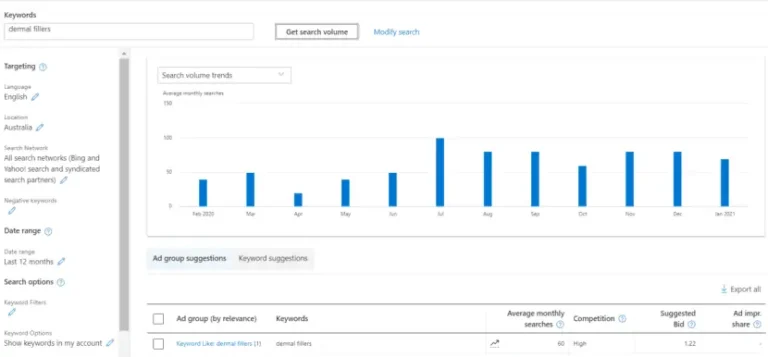
The tools are very similar to use, but one key difference is that Bing allows you to see more precise search volume for keywords.
You can also be more precise with location to see exactly how many searches for a keyword come from your targeted geographic areas.
Once you have found a keyword you want to bid on, you can choose match type to determine when your ad is shown.
Here’s a rundown of each match type:
Broad Match
The default setting is broad match type.
This will leave Bing’s algorithm to decide if your ad is shown for a search query containing your keyword.
For example, if you bid on the broad match keyword “real estate”, your ad could be displayed to users searching for:
“how to train as a real estate agent.”
And,
“real estate prices Gold Coast.”
The search intent is very different for each query, so it’s recommended you explore other match types and use negative keywords to avoid unwanted clicks.
Broad Match Modified
The broad match modifier allows you to have more control over when your ad is displayed.
If the search volume is low for your target keyword, you can use a broad match modifier to increase your visibility but limit irrelevant search queries displaying your ad.
For example, you may be targeting the broad match keyword “camera repair”.
In that case, you can add a + in front of the keyword “camera” so that your ad is only displayed if the word camera or a close variation is used in the search query.
Phrase Match
Phrase match will only display your ad when keywords are used in a precise order in a search query.
You can implement a phrase match by placing quotation marks around your keyword phrase.
For example, if you place quotation marks around the keyword phrase “electric car repair”, your ad will be displayed for the search query “electric car repair near me”, but not for the search query, “is it expensive to repair an electric car?”.
Exact Match
Putting brackets around your keyword phrase instructs bing to only display your ad for search queries that are an exact match.
If you place brackets around the keyword [Sydney estate agents], your ad will be displayed for the search query “Sydney estate agents”, but not for the search query “estate agents Sydney”.
This match type can reduce unwanted clicks, but it can also significantly reduce your ads’ visibility.
Bing search can provide lots of new keyword opportunities unique to the search engine, but it can also present new negative keywords that can result in irrelevant clicks and wasted ad budget.
Since 2018, you can now import your negative keywords lists directly from Google Ads to Microsoft Advertising.
After you have imported your negative keywords lists, you should analyse your Reports page in the Bing Ads dashboard after a week.
This will allow your campaigns to gather some data so that you can see which queries are displaying your ads and causing clicks without generating conversions.
Regularly adding to your negative keywords list will help you filter out unwanted clicks and improve campaign ROI.
When you notice a keyword generating clicks without getting many conversions, add the search term to your negative keyword list to stop your ad from being displayed for search queries containing the term in the future.
Conversion tracking is just as crucial for Bing Ads as it is for any other PPC campaign.
Without tracking conversions, you don’t know what is generating sales and what is wasting your budget.
After completing your account set up, Microsoft gives you a UET tag to add to all of the pages on your website.
This small piece of code track all of the users that Bing sends to your site and the number of conversions that the traffic generates.
The easiest way to track conversions is to set up a URL conversion goal within your ad account.
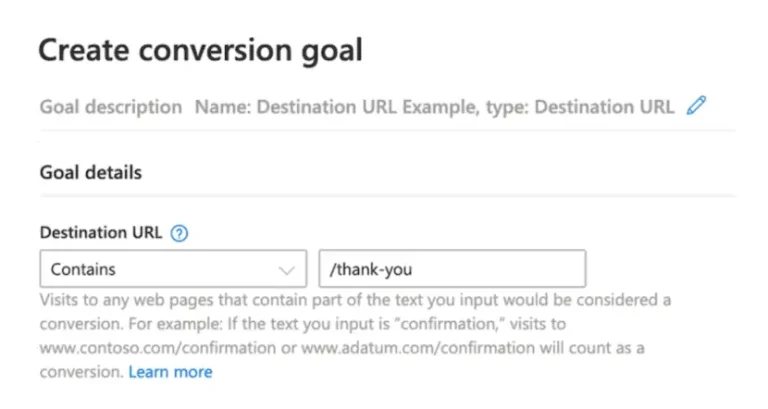
A conversion is recorded when somebody completes a purchase and lands on your thank you page.
Whenever a user clicks your ad on Bing and reaches the thank you page, the conversion is recorded in your campaign performance data.
Microsoft shopping campaigns are very similar to those on Google Ads.
You can display ads for your products on Bing, Yahoo!, and the AOL search engine.
Shopping ads are currently displayed in a grid on the right-hand side of the SERP and within the Bing Shopping search tab.
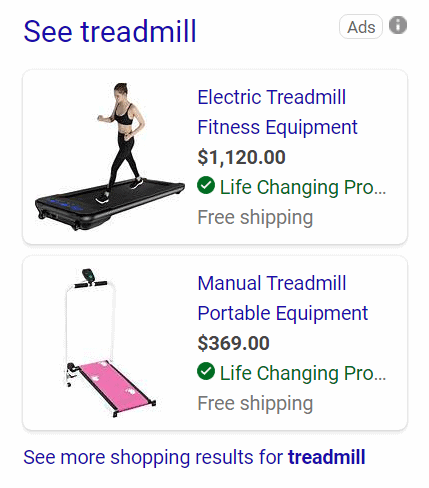
Bing shopping ads show a product image, pricing, shipping information, and the company name.
This campaign type allows e-commerce websites to gain more visibility on the Bing Search Network when users enter search queries that show buyer intent.
To use Bing shopping ads, you’ll first need to create a Bing Merchant Centre for your business. You’ll then be able to upload your product catalogue.
Bing typically takes around three days to approve product catalogues.
Once your product catalogue has been approved, you can import your shopping campaigns from Google Ads or create new campaigns.
Microsoft Advertising offers some great tools for gaining insight into your competitors for the paid spots of the SERP.
Under the Competition tab in your account dashboard, you can find Auction Insights.
This report shows you who your top competitors are and allows you to drill down into their campaign performance data.
You can segment data according to device, days of the week, and time to get a granular view of the paid spots for your target keywords.
When you click the Over Time view, you can see your competitors’ historical performance and gain insight into competitive trends that could impact your ad performance.
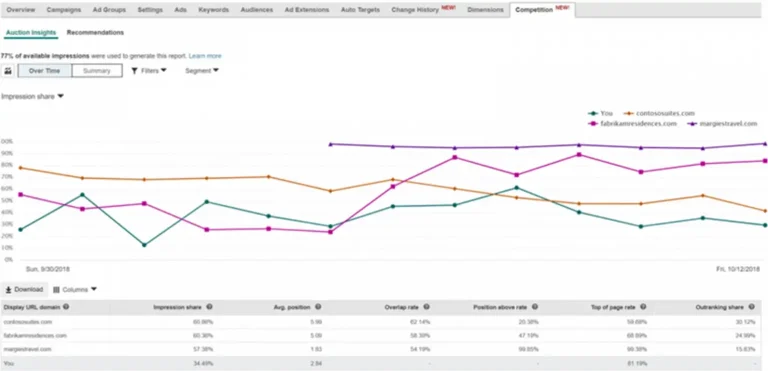
In the example above, you can see a new competitor has recently appeared and is getting a 98% share of impressions for the keyword.
This tool offers some great information to inform your campaigns and help you maximise your visibility in the SERP.
There’s been a significant boost in interest in Bing over the last few months in Australia.
More and more people are using Bing to search for your products and services. Bing Ads allows you to be there at the precise moment that people are most likely to buy from you.
While it doesn’t look like Google will be disappearing any time soon, the Microsoft search engine provides an excellent opportunity to reach new audiences and potential customers.
It’s not a case of Bing Ads or Google Ads. You can run campaigns on both networks to make sure your potential customers can find you online.
If you want to know what Bing Ads can do for your business, schedule a call with our paid search experts here at One Egg.

Product launch dilemma: Shopify or Amazon? We break down the pros and cons of each, helping you choose the best platform for quick sales vs. long-term brand building.
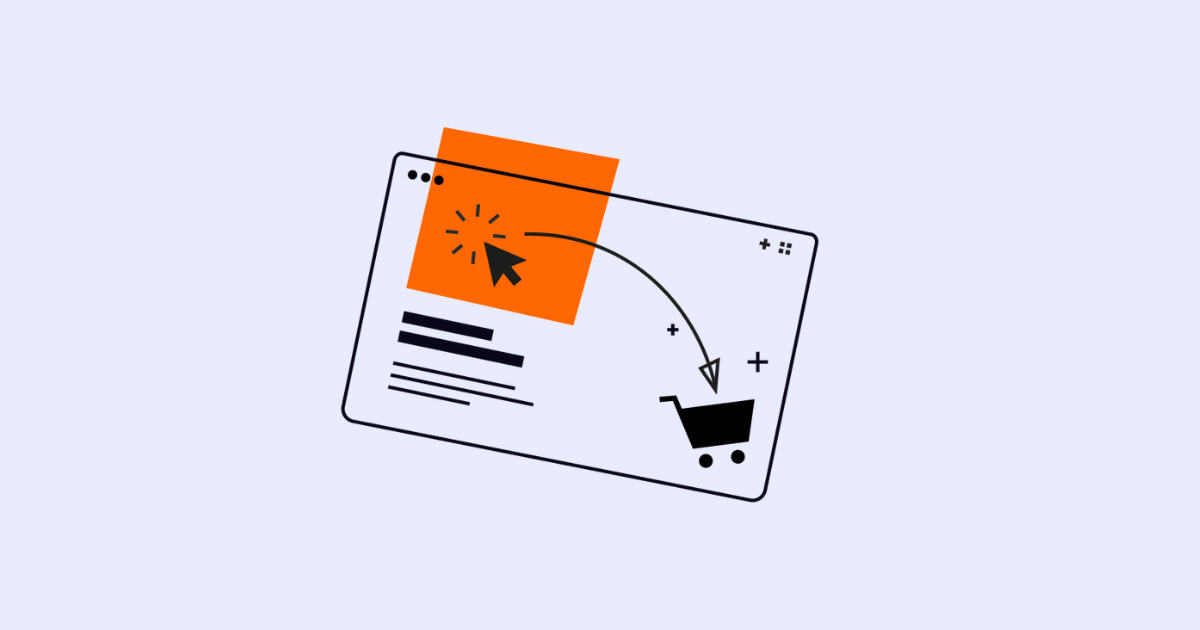
Master Amazon cash flow! Learn to calculate your product’s cash cycle, from manufacturing to payout, using Amazon’s “Sell Through Rate.” Get accurate forecasts for smarter scaling.

Neil Patel recently shared powerful tips on email marketing success—think cleaner lists, smarter personalization, and value-packed content. His key message? Email isn’t dead; it’s evolving.
Subscribe to receive exclusive industry
insights & updates
Copyright © 2014 – 2025 One Egg. All rights reserved.
Subscribe to receive exclusive industry insights & updates